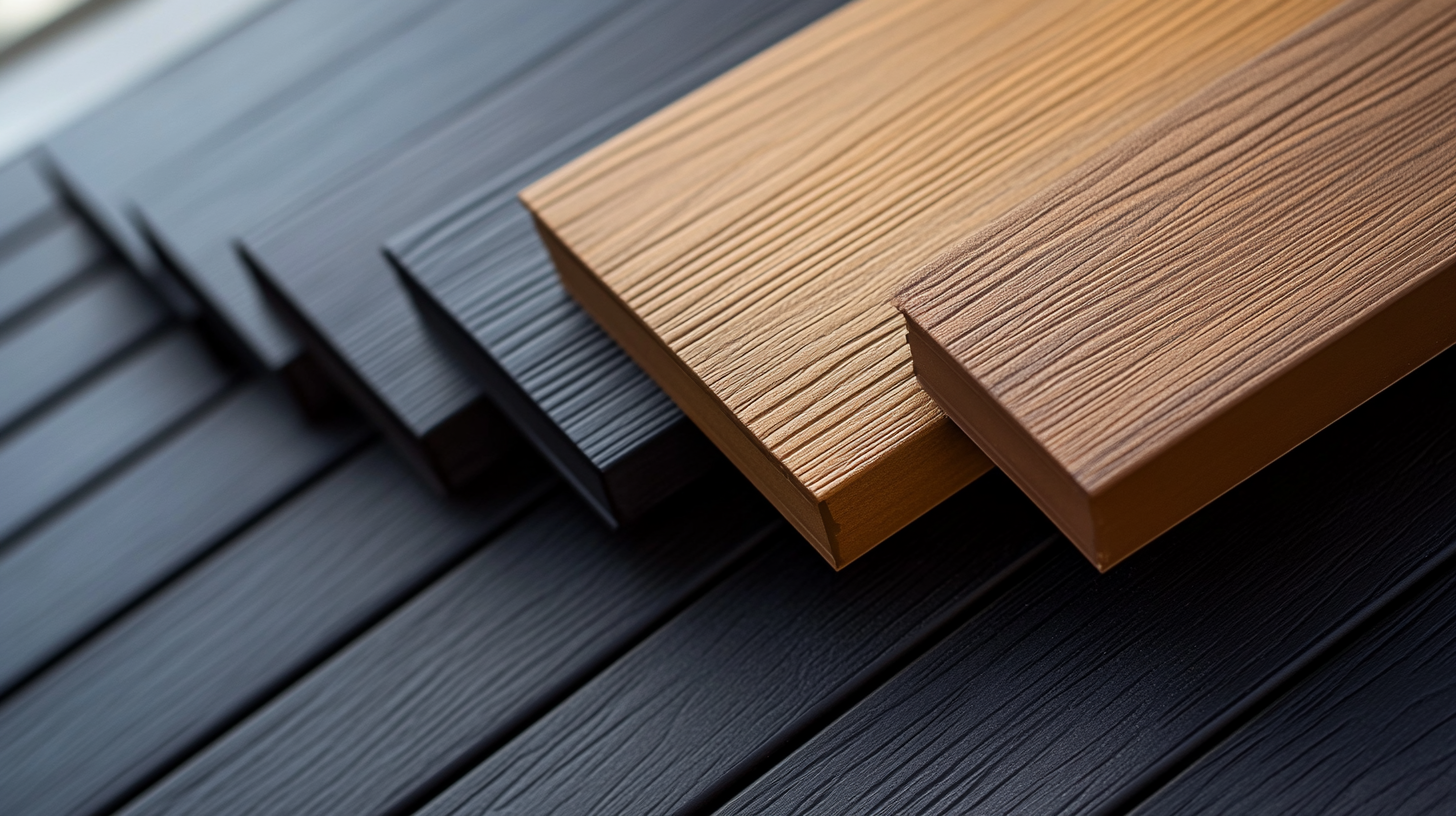As the demand for eco-friendly outdoor living spaces grows, homeowners are increasingly turning to decking composite materials as a sustainable solution. According to a report by the Freedonia Group, the global market for composite decking is projected to reach $5.7 billion by 2025, driven by heightened consumer awareness of environmental impacts and the desire for durable, low-maintenance options. Composite decking, made from recycled wood fibers and plastic, not only reduces the need for deforestation but also minimizes waste in landfills. Furthermore, studies from the North American Deck and Railing Association indicate that composite decks last longer than traditional wood, enhancing their sustainability appeal. With the right choice in decking composite, consumers can create beautiful, environmentally-friendly outdoor spaces that align with their values and support the conservation of natural resources.

Composite decking has rapidly gained popularity among eco-conscious homeowners, and for good reason. Made from a combination of recycled wood fibers and plastic materials, it offers a sustainable alternative to traditional timber decking. By opting for composite materials, you significantly reduce the demand for virgin wood, helping to preserve forests and maintain biodiversity. Furthermore, advanced manufacturing processes mean that these composite products are often designed to last longer than their natural counterparts, minimizing waste and the need for frequent replacements.
In addition to their sustainable nature, composite decks also boast lower environmental impact in terms of maintenance. Unlike wood decking, composite materials do not require painting, staining, or sealing, which means fewer harmful chemicals are released into the environment. They are also resistant to mold, mildew, and insects, resulting in a longer lifespan and reduced maintenance efforts. With a range of colors and textures available, composite decking can mimic the look of natural wood while providing a practical solution for eco-friendly outdoor spaces. Embracing composite decking means choosing style and sustainability in one aesthetically pleasing package.
The chart above illustrates the key benefits of using composite decking for sustainable outdoor spaces. Each benefit is rated on a scale from 1 to 10, showcasing the high durability, low maintenance, eco-friendliness, aesthetic appeal, and value for money that composite decking offers.
When selecting composite decking materials for sustainable outdoor spaces, several key factors should be considered to ensure both performance and environmental responsibility. First and foremost, assess the material's composition. High-quality composite decking is typically made from a blend of recycled wood fibers and plastic, which minimizes waste and reduces the demand for virgin materials. Look for products that prioritize sustainability by using a higher percentage of recycled content, as this not only helps the environment but can also enhance the durability of the decking.
Another critical factor is the product's longevity and maintenance requirements. Many composite decking options are designed to withstand harsh weather conditions and resist fading, splintering, and decay. Opt for brands that offer warranties and provide evidence of their products’ performance over time. Additionally, consider the environmental impact of manufacturing processes and seek out brands that use eco-friendly practices and low-VOC finishes. By focusing on these important elements, you can choose composite decking that not only beautifies your outdoor space but also aligns with sustainability principles.

When selecting composite decking for sustainable outdoor spaces, it's vital to compare the different materials available in terms of durability and environmental impact. Composite decking typically comes in two main categories: wood-plastic composites (WPC) and PVC decking. Wood-Plastic Composites are made from a blend of recycled wood fibers and plastic, offering a natural wood appearance while also resisting decay and insect damage. This type of decking is generally more cost-effective and provides excellent durability, making it a popular choice for those looking to create eco-friendly outdoor areas.
On the other hand, PVC decking is 100% plastic, which means it doesn't contain any organic materials that can degrade over time. This enhances its durability, as it is resistant to moisture, mold, and fading. PVC decks are also lighter in weight, making them easier to install. However, their environmental sustainability hinges on the type of recycled plastics used in manufacturing. By carefully evaluating the composition and durability of various composite decking options, homeowners can select a solution that not only meets their aesthetic and functional needs but also aligns with their commitment to sustainability.

Creating a harmonious outdoor space with composite decking involves a blend of thoughtful design elements and a focus on sustainability. To begin, consider the layout of your deck. Aim for a seamless transition from indoors to outdoors by aligning your decking with your home's architectural features. Incorporating multi-level decking can add visual interest and create distinct areas for dining, lounging, or gardening, making your outdoor environment feel more expansive and inviting.
Selecting colors and textures that complement your natural surroundings is also essential. Opt for natural earth tones that harmonize with the landscape, enhancing the overall aesthetic appeal. Incorporating accessories such as lighting, planters, and outdoor furniture can further enrich the ambiance. Smart solutions like built-in seating or multifunctional spaces can turn your deck into a dynamic area that adapts to your lifestyle. As outdoor living trends evolve, integrating innovative design ideas will help you craft a breathtaking retreat that emphasizes both beauty and function in your sustainable outdoor oasis.
| Feature | Description | Benefits | Sustainability |
|---|---|---|---|
| Material Composition | Made of recycled wood and plastic fibers | Low maintenance and long-lasting | Reduces waste and carbon footprint |
| Color Options | Variety of colors to match any landscape | Enhances aesthetic appeal | Utilizes dyeing techniques that minimize chemical use |
| Durability | Resistant to rot, fading, and pests | Reduces need for replacements | Less frequent resource use for repairs |
| Installation | Easier to install with hidden fasteners | Saves time and labor costs | Lower environmental impact from construction |
| Maintenance | Requires minimal cleaning | Time-efficient for homeowners | Reduces the need for harsh chemicals |
When it comes to maintaining composite decking, implementing the right practices can significantly enhance its longevity and performance. Regular cleaning is essential; using a mild detergent with warm water and a soft-bristle brush helps remove dirt, debris, and stains without causing damage. Avoiding harsh chemicals and high-pressure washing is crucial, as these can strip away the protective layers that the composite material relies on to resist mold and fading.
In addition to routine cleaning, it’s important to inspect your decking periodically for signs of wear or damage. Look for loose boards, raised edges, or any visible deterioration. Addressing minor issues promptly can prevent them from evolving into larger, more costly repairs. Additionally, applying a protective sealant designed for composite materials can offer an extra layer of defense against the elements, maintaining both the aesthetics and structural integrity of your outdoor space. By adopting these maintenance practices, you can ensure your composite decking remains a durable and attractive feature for years to come.
